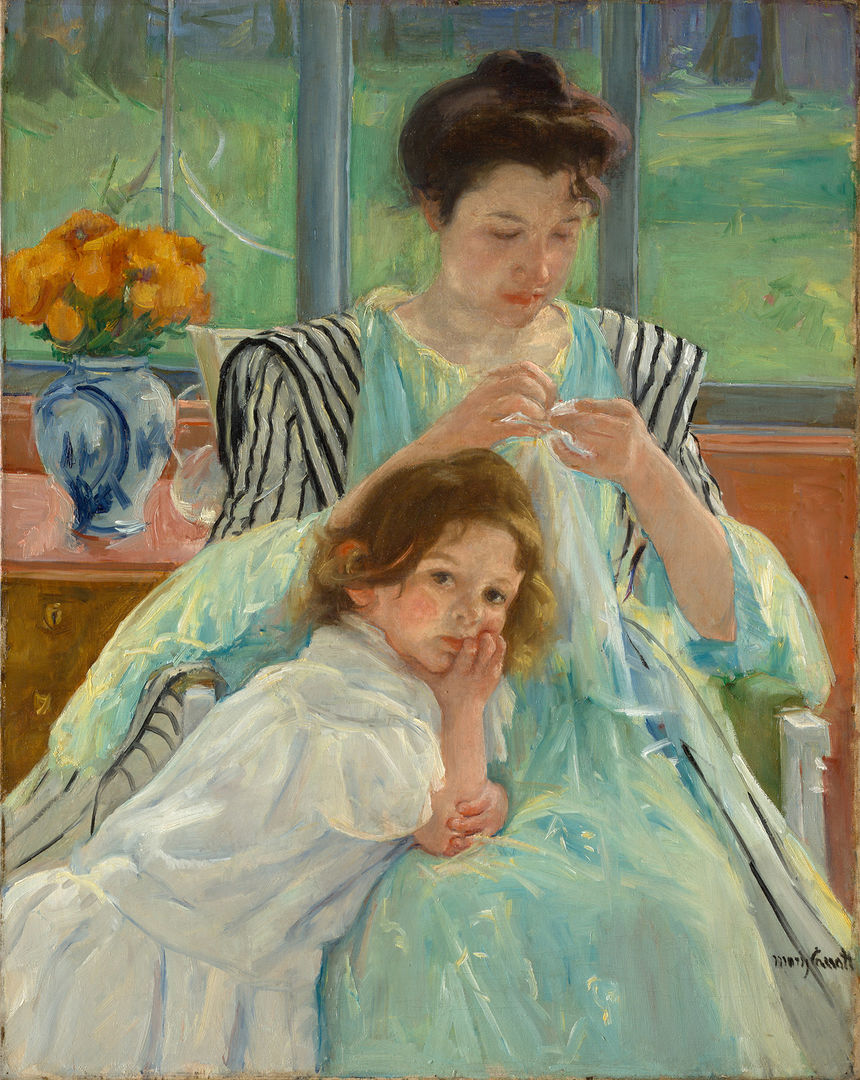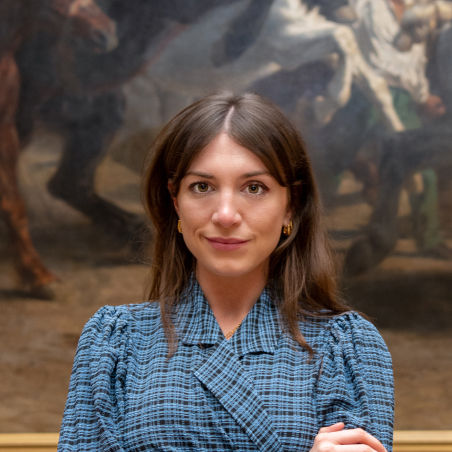Met curator Laura Corey considers the legacy of Mary Cassatt, an American Impressionist painter known for her sensitive portraits of motherhood who also played a critical role in influencing American collectors to purchase Impressionist paintings.
Corey notes that some of the most significant works of Impressionist art at the Museum came from the donation of Louisine Havemeyer’s collection, which was assembled with Cassatt’s guidance.
Listen to the conversation, or read the full transcript below.
Transcript
KATY HESSEL: Mary Cassatt was an American Impressionist painter known for her sensitive portraits of motherhood. To me, what makes her paintings so special is how relatable they feel. This work, Young Mother Sewing, seems almost like a snapshot pulled out of a family scrapbook—a young girl slumped in her mother’s lap while she sews.

Mary Cassatt (American, 1844–1926). Young Mother Sewing, 1900. Oil on canvas, 36 3/8 x 29 in. (92.4 x 73.7 cm). The Metropolitan Museum of Art, New York, H.O. Havemeyer Collection, Bequest of Mrs. H.O. Havemeyer, 1929 (29.100.48)
LAURA D. COREY: It’s almost like you can see both characters breathing a sigh of relief, an exhale. As if Cassatt has just walked out into this sunroom and come upon this scene.
HESSEL: That’s Met curator Laura Corey. And in 1900, when Cassatt made this work, this kind of casualness was groundbreaking. Mother and child portraits were so often quite posed and formal.
COREY: Then what’s different here, what’s so striking, is how comfortable the little girl is leaning into her mother’s lap, that “not a care in the world” attitude.
HESSEL: That’s part of what makes Mary Cassatt’s work so unique and influential. But Cassatt’s influence is also palpable in The Met’s galleries in other ways…
COREY: Cassatt has this presence that spreads through so many of the galleries of the Museum because she was a passionate advocate for collecting the art of the Impressionists—Degas, Manet, Monet—that may not have ever come to the United States, let alone to The Metropolitan Museum, without her influence.
HESSEL: The story of how this came to be starts in Paris in 1874, when Cassatt meets a young wealthy New Yorker, Louisine Havemeyer…
COREY: And she begins to take Louisine around Paris and opens her eyes in this really inspiring way to what is happening in the art world at the time.
HESSEL: She takes her to see Impressionist works, and she speaks passionately about them.
COREY: So it’s with this great enthusiasm and her real gift for sharing that enthusiasm that she brings Louisine into the fold of what was then a tiny circle of admirers of Impressionism.
HESSEL: And Louisine and her husband became important collectors of Impressionist paintings.
COREY: Louisine Havemeyer called Mary Cassatt her fairy godmother of her collection, her inspiration, and her guide—and said that the best things that she bought had been on Cassatt’s advice. Cassatt worked for a period of nearly fifty years in helping the Havemeyers build what became one of the greatest collections of art brought to America.
HESSEL: When Louisine died in 1929, two hundred works of Impressionist art from her and her husband’s collection were donated to The Met. And so though it’s not visible at first glance, Mary Cassatt influenced the paintings you see hanging on the walls of the Museum today. In researching this history, Laura hopes to make that hidden role more visible.
COREY: I think bringing out the stories of these women both in what we do see and in what we don’t see helps to restore their rightful presence in the Museum.
HESSEL: Listen on to hear more incredible stories about women artists at The Met.
###
This audio tour is one in a series of tours called Museums Without Men produced by Katy Hessel in collaboration with institutions across the globe, such as the Fine Arts Museum San Francisco, the Hepworth Wakefield, the Hirshhorn Museum and Sculpture Garden, and Tate Britain. The series encourages museum visitors to seek out work by great women and gender non-conforming artists in these institutions who, simply by virtue of their gender, were often overlooked and underrepresented.





















